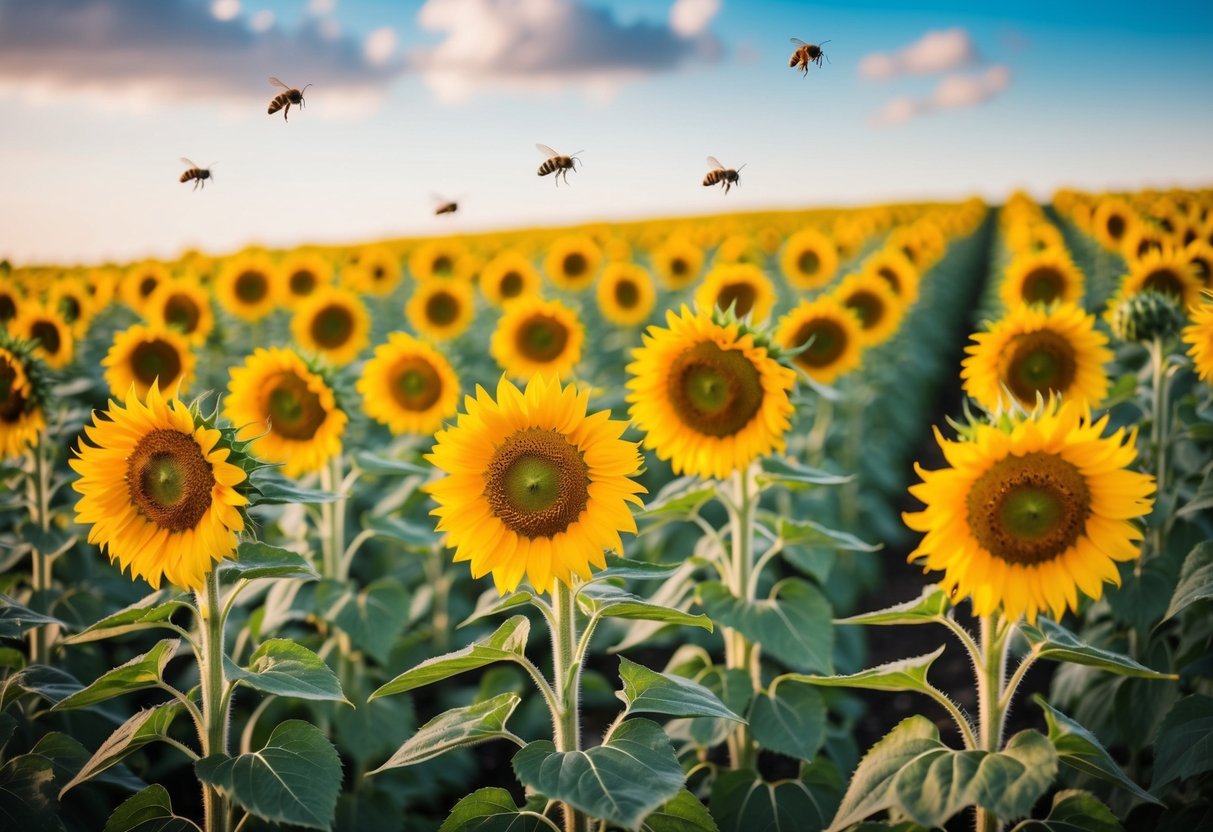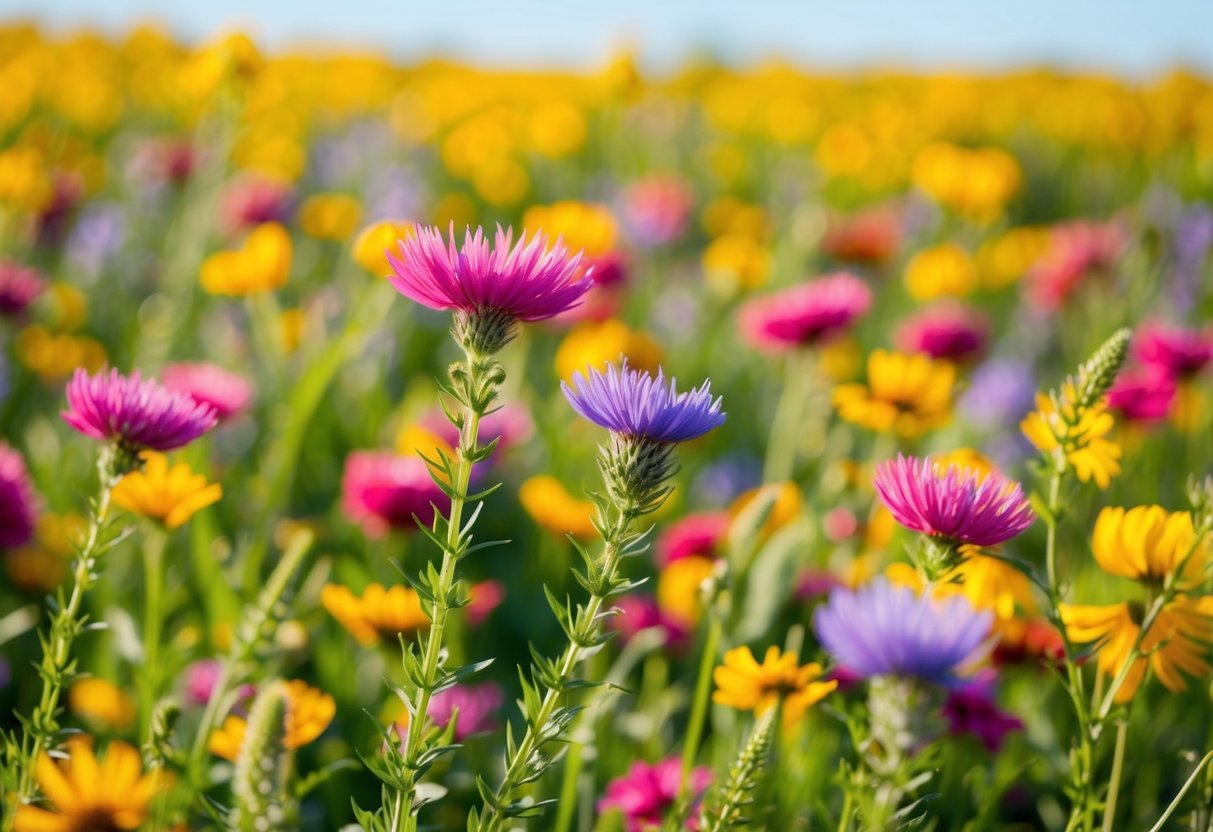What is the Easiest Wildflower to Grow? Top Picks for Beginners
When looking to add beauty and color to your garden with minimal effort, considering easy-to-grow wildflowers is a fantastic option. These resilient plants thrive with little care and support a vibrant ecosystem right in your backyard. You might wonder which one to start with. Goldenrod is often highlighted as one of the easiest wildflowers to grow, offering striking golden blooms that flourish in full sun.

Adding goldenrod and other wildflowers can transform your garden into a colorful retreat. Not only are wildflowers like the goldenrod visually appealing, but they also attract pollinators and support local wildlife. This makes them an excellent choice for creating a low-maintenance, eco-friendly flower garden.
It’s not just about the goldenrod. Exploring different wildflowers can introduce diverse colors and scents to your space, enhancing the natural beauty in simple ways. With a bit of planning, your wildflower garden can bloom effortlessly, bringing joy season after season.
Choosing the Right Wildflowers

Picking the best wildflowers for your garden can be a fun and rewarding task. By understanding native plants and considering sunlight and soil needs, you can choose low-maintenance varieties that thrive in your space. This helps create a beautiful and easy-to-manage garden.
Understanding Native Plants
Choosing native plants is essential for a successful garden. These plants have adapted to your local environment, making them more resilient. They require less care than non-native species. Native wildflowers like black-eyed Susan, coneflower, and milkweed are excellent choices.
Native plants benefit wildlife, attracting pollinators like bees and butterflies. They help maintain local ecosystems, offering natural beauty and ecological benefits. Consider researching local native plant lists for more options that suit your area.
Sunlight and Soil Requirements
Wildflowers usually need the right amount of sunlight and proper soil to grow well. Many wildflowers, including the aster and black-eyed Susan, thrive in full sun. This means at least six hours of sunlight each day.
Soil is equally important. Some wildflowers prefer moist soil, while others need well-drained conditions. Milkweed can handle various soil types but flourishes in well-drained areas. Check your garden’s sunlight and soil needs to ensure your plants thrive.
Selecting Low-Maintenance Varieties
For a fuss-free garden, opt for low-maintenance plants. These require little watering and care, making them perfect for busy gardeners. Drought-tolerant varieties like coneflowers and goldenrod are hardy choices.
Choose wildflowers that suit your climate and maintenance ability. You’ll enjoy a beautiful garden without spending hours tending to it. Look for flowers known for easy growth and resilience, ensuring a stress-free gardening experience.
Top Easy-to-Grow Wildflower Varieties

Growing wildflowers adds vibrant color and life to your garden with minimal effort. Some varieties are perennials that return year after year, while others are annuals that provide immediate impact.
Perennial Favorites
Coreopsis and coneflower are stars among easily grown perennials. Coreopsis, often known as tickseed, bursts with bright yellow blooms through summer. It’s hardy and great for attracting butterflies. Coneflowers, such as the purple coneflower, add a striking pop of pink to your garden. They thrive in full sun and handle drought well, making them ideal for low-maintenance gardens. Black-eyed Susan is another popular choice. Known for its bright yellow petals and dark centers, it can tolerate various soil types and is deer resistant. If you’re looking for a reliable and beautiful perennial, consider adding these to your garden.
Annuals for Immediate Impact
If you want vibrant blooms right away, annuals like California poppy and cosmos are great options. California poppies explode in a burst of orange and can grow in poor soil conditions. They are tough and easy to maintain, thriving with little water. Cosmos come in a variety of colors such as pink and white, and they’re incredibly easy to grow from seed. These flowers are perfect for filling empty spaces and adding quick color to your garden. Sunflowers are another excellent annual. They tower above other plants, adding height and boldness, and are also simple to grow. Planting these annuals will bring your garden to life almost immediately.
Ground Covers and Low-Growers
Ground cover wildflowers like blue flax and common blue violet are not only beautiful but also practical. Blue flax has delicate blue flowers that appear in the early summer. It spreads easily, forming a lovely mat of color. The common blue violet is low-growing and provides rich purple color. It prefers shady areas, making it perfect for spots where other plants might not thrive. These low-growers are great for keeping weeds at bay while adding texture to your garden. Incorporating them into your garden can create a lush and inviting landscape.
Planting and Care for Wildflower Gardens

Creating a wildflower garden involves choosing the right techniques, regular maintenance, and understanding how to support local wildlife. You’ll learn about planting methods, seasonal upkeep, and attracting beneficial species like butterflies and bees.
Ideal Planting Techniques
When starting your wildflower garden, choose a sunny spot, as most wildflowers thrive in full sun. You’ll want the soil to be well-draining, so avoid areas prone to waterlogging.
Begin by tilling the soil to about 3 inches deep to remove weeds without bringing dormant weed seeds to the surface. After clearing the area, scatter your chosen wildflower seeds and lightly cover them with soil.
Opt for plants native to your region, which enhances success by matching your garden’s natural conditions. Native species are also more likely to attract local wildlife and pollinators. Try using a diverse mix of seed varieties to boost biodiversity.
Seasonal Maintenance Tips
Maintaining your wildflower garden involves a few key tasks throughout the seasons. Water regularly during dry spells, especially during the initial growing phase. Once established, wildflowers generally require less watering.
Early in the growing season, check for weeds and remove them to keep your wildflowers healthy. Allow the wildflowers to reseed naturally by letting some flowers mature and drop seeds in late summer.
Encourage natural pest control by avoiding chemical pesticides. Instead, focus on attracting beneficial insects to manage pests.
Attracting Wildlife and Pollinators
Wildflower gardens play a vital role in attracting bees, butterflies, and other pollinators. Choose flowers with diverse shapes and colors, as this draws in a variety of species. Plants like goldenrod, when planted, are excellent choices for attracting pollinators like bees and butterflies.
Include a water source nearby, such as a shallow birdbath, to invite birds and insects. You can also add supplementary habitats, like bee hotels, to provide nesting spaces.
Select native flowers that provide nectar and food sources for local species. Monarch butterflies and songbirds will benefit from your garden’s welcoming environment, enhancing overall biodiversity.
Creating a Sustainable Wildflower Ecosystem

Wildflower ecosystems are essential for supporting biodiversity, providing ecological benefits, and involving communities. By focusing on local species and engaging with resources, you can create a thriving and sustainable wildflower garden.
Supporting Local Biodiversity
Native plants fit your local environment perfectly. By choosing them, you support local wildlife, including bees, butterflies, and birds. Wildflowers are more than just pretty to look at. They offer a key food source for many pollinators.
Consider your USDA growing zones to ensure your plants flourish in the climate. Check out native nurseries in your area for plants naturally adapted to your region. This makes maintenance easier and helps sustain local biodiversity.
Ecological Benefits of Wildflowers
Wildflowers contribute to healthier ecosystems by promoting soil health and reducing erosion. They offer essential pollinator support, which increases food production by aiding in pollination.
These plants can improve urban landscapes by adding natural beauty and creating wildlife habitat areas. Incorporating wildflowers into your garden also reduces the need for chemical fertilizers and pesticides, making it more eco-friendly.
Resources and Community Involvement
Connecting with local organizations like the Native Plant Horticulture Foundation or the Florida Association of Native Nurseries can offer guidance and resources. These organizations provide valuable information on landscape use and how to maintain your wildflower garden.
Community involvement is vital. You can join neighborhood groups or volunteer for wildflower planting events. Sharing ideas and seeds with others can bolster efforts in creating a broader impact on local ecosystems.







